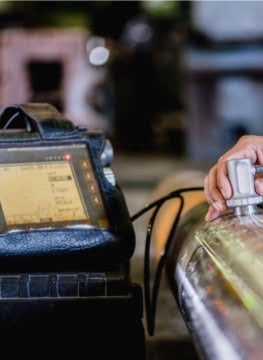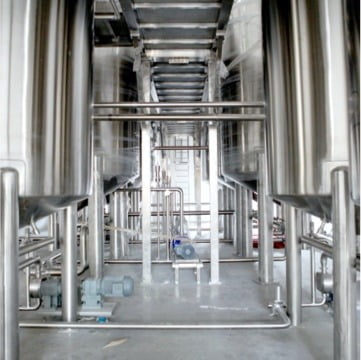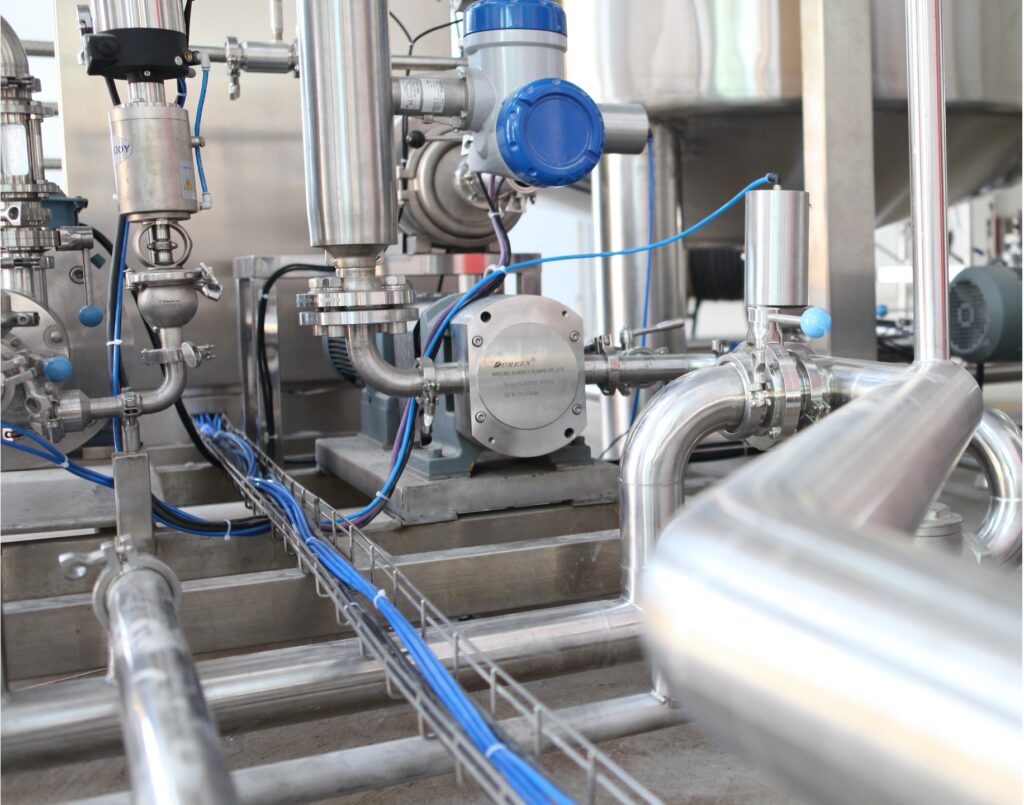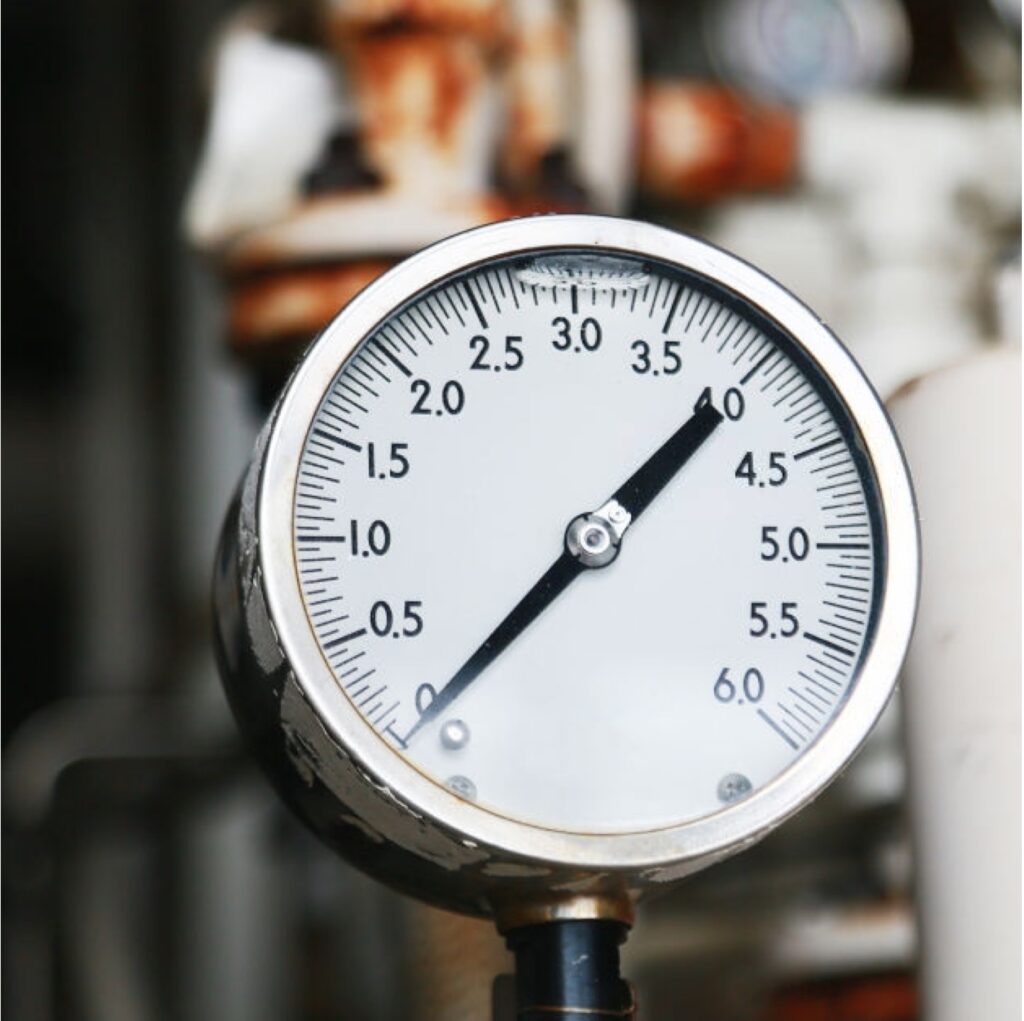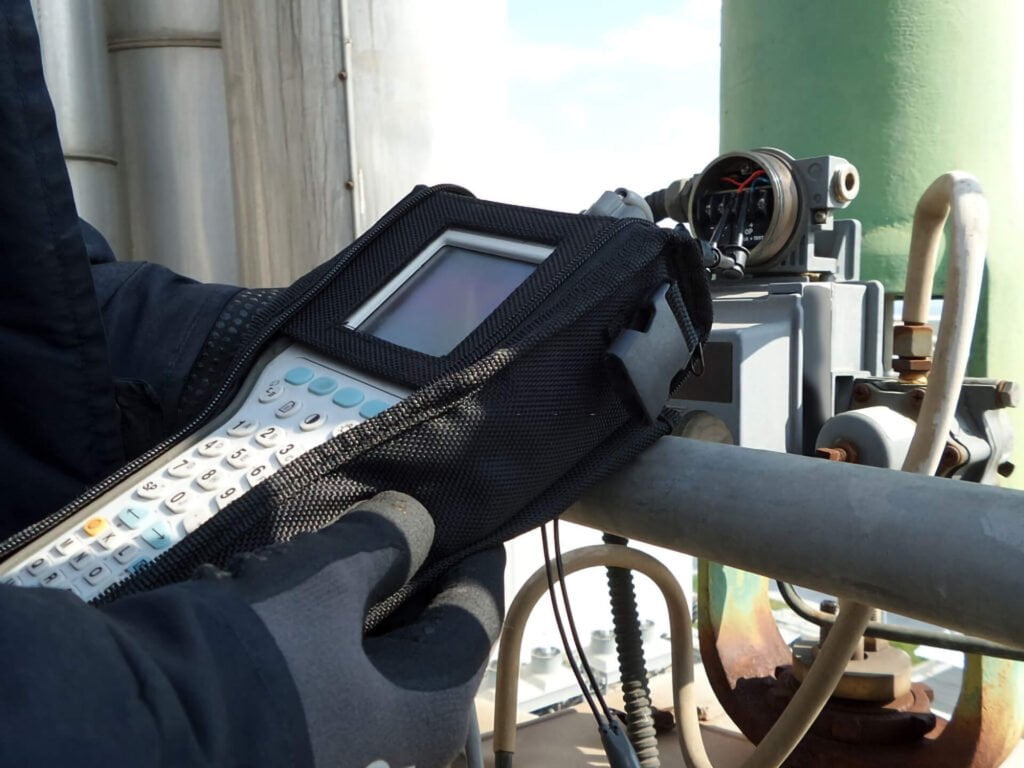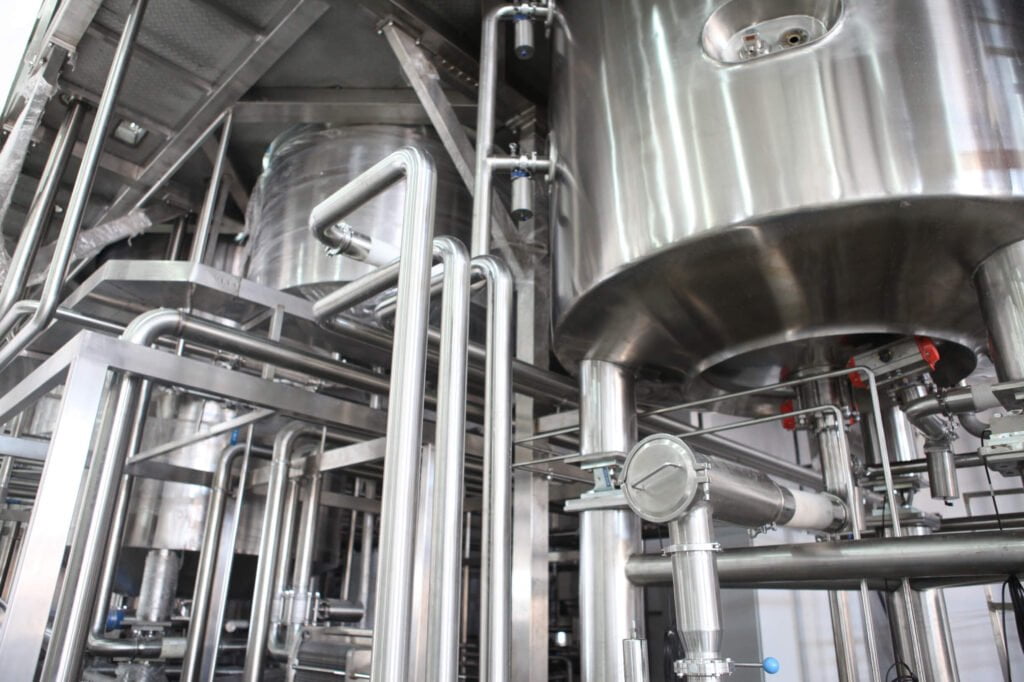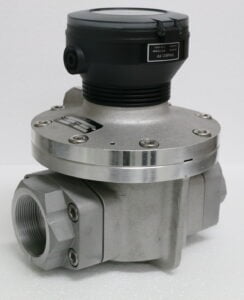 Positive displacement flow meters measure the volumetric flow rate of a moving fluid or gas by way of precision-fitted gears or rotors containing cavities through which precisely known volumes of fluid pass. A basic analogy would be holding a bucket below a tap, filling it to a set level, then quickly replacing it with another bucket and timing the rate at which the buckets are filled (or the total number of buckets for the “totalised” flow).
Positive displacement flow meters measure the volumetric flow rate of a moving fluid or gas by way of precision-fitted gears or rotors containing cavities through which precisely known volumes of fluid pass. A basic analogy would be holding a bucket below a tap, filling it to a set level, then quickly replacing it with another bucket and timing the rate at which the buckets are filled (or the total number of buckets for the “totalised” flow).
Positive displacement flow meters are very accurate and have high turndown. They work best with clean, non-corrosive, and non-erosive liquids and gases, although some models will tolerate some impurities. They require no straight runs of pipe for fluid flow stream conditioning though pressure drop can be an issue. They are widely used in custody transfer and are applied on residential home natural gas and water metering.
There are several types of positive displacement flow meters available. Trimec Flow Products supplies the following flow meters:
Oscillating Piston
Oscillating Piston meters operate when a liquid enters into a precision machined chamber which contains an oscillating piston. The position of the piston divides the chamber into compartments containing an exact volume. The liquid pressure causes the piston to oscillate and rotate its centre hub. The movements of the hub are sensed through the meter wall by a series of magnets. Each revolution of the piston hub is equivalent to a fixed volume of liquid, which is indicated as 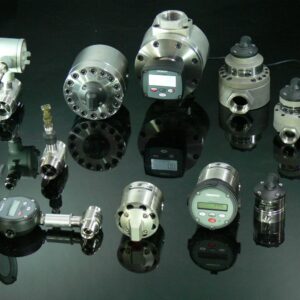 flow by an indicator or totaliser. Close clearances between the piston and the chamber ensure minimum slippage of the liquid for highly accurate and repeatable measurement of each volume cycle.
flow by an indicator or totaliser. Close clearances between the piston and the chamber ensure minimum slippage of the liquid for highly accurate and repeatable measurement of each volume cycle.
Oval Gear
Oval gear meters use oval shaped gear-toothed rotors that rotate within a chamber. As these rotors turn, they sweep out and trap a very precise volume of fluid between the outer oval shape of the gears and the inner chamber walls. The flow rate is then calculated based on the number of times these compartments are filled and emptied.
Turbine
The basic construction of turbine flow meters includes a bladed turbine rotor which is axially suspended in the pipe. As the fluid flows through the pipe, it causes the rotor to spin on its axis at a speed which is proportional to the velocity of the fluid. The passage of each rotor is sensed by the turbine meter using gears, photoelectric cell or magnetic pickup installed on the outside of the flow tube or the meter body, adjacent to the perimeter of the rotor.
Paddle Wheel
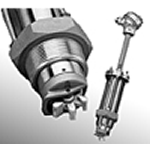 The insertion paddle wheel flow meters are a cost effective means of accurately measuring the flow of water, water-like liquids or a wide variety of low viscosity liquids in completely full, large diameter pipes. The sensor is inserted into the process piping via a suitable fitting. Liquid flow through the pipe results in rotation of the affixed paddle wheel. The rotational speed of the paddle is proportional to the flow velocity, and therefore, proportional to the flowrate in the pipe.The insertion type design of Paddle Wheel Flow Meters provides a measuring technique that is much less expensive than full bore flowmeters, especially in larger pipe sizes. Insertion paddle wheel sensors are a robust measuring technology that boasts exceptional tolerance to dirt and solids.
The insertion paddle wheel flow meters are a cost effective means of accurately measuring the flow of water, water-like liquids or a wide variety of low viscosity liquids in completely full, large diameter pipes. The sensor is inserted into the process piping via a suitable fitting. Liquid flow through the pipe results in rotation of the affixed paddle wheel. The rotational speed of the paddle is proportional to the flow velocity, and therefore, proportional to the flowrate in the pipe.The insertion type design of Paddle Wheel Flow Meters provides a measuring technique that is much less expensive than full bore flowmeters, especially in larger pipe sizes. Insertion paddle wheel sensors are a robust measuring technology that boasts exceptional tolerance to dirt and solids.
Selecting a Flow Meter
The basis of good flow meter selection is a clear understanding of the requirements of the particular application. Therefore, time should be invested in fully evaluating the nature of the process fluid and of the overall installation.
- What is the fluid being measured by the flow meter(s) (air, water, etc…)?
- Do you require rate measurement and/or totalisation from the flow meter?
- If the liquid is not water, what viscosity is the liquid?
- Is the fluid clean?
- Do you require a local display on the flow meter or do you need an electronic signal output?
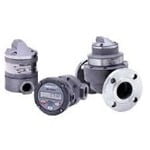
- What is the minimum and maximum flow rate for the flow meter?
- What is the minimum and maximum process pressure?
- What is the minimum and maximum process temperature?
- Is the fluid chemically compatible with the flow meter wetted parts?
- If this is a process application, what is the size of the pipe?
AMS Instrumentation & Calibration have been the Trimec Flow Products distributors in Australia and New Zealand for many years. Trimec Flow Products are manufactured in Australia and markets their products worldwide.
Trimec Flow Products has many years of experience with this and countless other applications, and AMS are ready and waiting to help you with your Measurement Solutions.
For further information you can also contact our Product manager – Wendy Upasena
